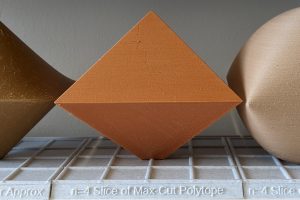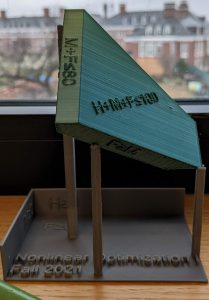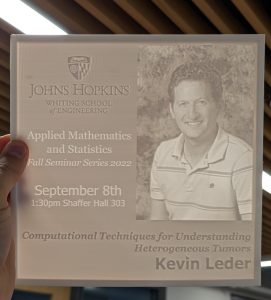
Benjamin Grimmer’s research focuses on the design and analysis of algorithms for optimization problems — an area that can seem quite abstract to many. But the assistant professor has found a novel way to make mathematical concepts more concrete and understandable for students: use of a 3D printer.
“I use the printer to translate concepts ranging from linear algebraic norms to operator norms into three-dimensional, tangible objects that students can hold, look at, and feel,” said Grimmer. “They can be passed around in-person or even examined through an overhead camera in virtual teaching environments or in 70-person lecture halls, where some students are seated farther away from me.”
For example, Grimmer uses his 3D printing as illustrations of notion and distance, in first-year courses on visualization mathematics, and to illuminate research topics such as computational complexity and graph theory optimization problems.
And rather than having doctoral candidates draw various shapes to work out a problem, he offers objects that elucidate the curves, convex, and smooth properties of shapes in a way that he believes will help enhance the students’ work designing algorithms.
In addition, 3D visualizations play a central role in the way Grimmer optimizes the classroom rubric. He is willing to grade students with any weighting of their homework, midterm, and final scores, satisfying certain mathematical rules. Various rubrics exist that satisfy these rules and each one corresponds to one point inside the “Grading Polyhedron” 3D printed shape. Grimmer views them as dimensions (height, width, depth), and selects the best rubric for each student. In turn, this ends up being the class’s first optimization problem to solve. (see below)

Grading Polyhedron
The optimization task is figuring out which of these infinite options gives a student the highest overall score, which depends on how the individual student did on homework, midterms, and the final.
Grimmer has found other effective uses of 3D printing within his role as organizer of the AMS Department Seminar. Each week’s invited speaker is announced by a 3D printed “poster.” Careful variations in the thickness of the 3D-printed plastic give the poster depth and color as light passes through, resulting in photo-realistic images. After their seminar, the speaker is given the poster as a plaque, thanking them for their visit. (see below)

3-dimensional printed poster